I tested RSI + ADX Trading Strategy 100 TIMES and you should…
What’s the win rate of the RSI and ADX trading strategy? Can it make money in the long run? We have tested them both 100 times separately on the Trading Rush Channel, RSI had a profitable win rate, but ADX didn’t! RSI had a profitable win rate because we used it to find the overbought and oversold conditions. But many people use it in an opposite way. Instead of buying when the price is oversold, they buy when the price is overbought. Similarly, instead of selling when the price is overbought, they sell when the price is oversold. Why would anyone sell when the price is already oversold, and why would anyone buy a stock or forex pair, when the price is at the top? Well, according to many traders, when the price is in an uptrend, the overbought RSI level actually means an increase in buying pressure. In simple words, too many people are buying, so the price will go up. Similarly, when the RSI is oversold in a downtrend, it means that too many people are selling, and the price will go down. Now, if you have been watching the Trading Rush Channel for a while, you know I don’t recommend buying the top and selling at the bottom of a move, because there are better ways of entering a trade. But what if we are wrong, and taking opposite trades with the RSI indicator actually makes money? What’s the winrate of RSI with ADX Trading strategy? Well, why don’t we take 100 Trades with it to find the truth? And at the end of the video, I’m going to give it a Trading Rush Score, just like we have given to many other strategies we have tested so far.
By default, the RSI indicator will come with 70 and 30 as overbought and oversold levels respectively. But instead of buying at the bottom of the RSI where the oversold level is, we will buy when the RSI is at the top. So the buy entry in the opposite RSI strategy, is when the RSI crosses above the 70 level. Similarly, instead of selling at the top of the RSI where the overbought level is, we will sell when the RSI is at the bottom. So the sell entry in the opposite RSI trading strategy, is when the RSI crosses below the 30 level. Now subscribers of Trading Rush Channel can already tell, that this trading setup has no trend filter. In this trading setup, you are not only buying at the top, but you will also buy when the price is downtrending. This setup on its own will give a lot of false signals. So to find the direction of the long term trend, we will use the 200 exponential moving average. If price is above it, it means that there is an uptrend going on. And if the price is below it, it means that the price is in a downtrend. But if you look closely, you will find another big problem with taking opposite trades with the RSI indicator. You see, RSI is a range indicator, it works best when the market is in a range. And you can use it in a trending market, to find the end of the pullback. But in this setup, since we are taking opposite signals, almost all signals in the range will be false. Because when the price reaches the overbought level, it will have a higher probability of going down. And when the price reaches the oversold level, it will have a higher probability of going up instead of down. That’s where the ADX indicator comes into play. If you have watched the ADX indicator on the Trading Rush Channel, you know that you can use the ADX indicator, to find if the price is trending or not. When the ADX value is above 25, price is considered to be trending.
So our complete RSI and ADX trading strategy goes something like this, and I took 100 trades with it the same way. The buy entry signal is when, the RSI crosses above the 70 level. But at the same time to filter false signals, price has to be above the 200 period moving average, and ADX value has to be above 25. Since we are buying at the top of the trend, setting the stoploss below the pullback, is not such a good idea. The size of the stoploss will be too big. So instead of setting the stoploss below the pullback, we will use the 21 period exponential moving average, and will set the stoploss below it.
Similarly, the sell entry signal is when, the RSI crosses below the 30 level. But at the same time, price has to be below the 200 moving average, and ADX value has to be above 25. Remember, in both of these setups, ADX has to be above 25, and not below. The stoploss in the short setup, goes above the 21 period exponential moving average.
In this example, RSI is crossing above the 70 level, ADX is above 25, and price is above the 200 moving average. So long entry is when the RSI crosses above 70, and stoploss below the 21 moving average.
And in this example, RSI is crossing below the 30 level, ADX is above 25, and price is below the 200 moving average. So short entry is when the RSI crosses below 30, and stoploss above the 21 moving average.
So I tested the RSI with ADX trading strategy 100 times, and here’s what I found out.
Number 1. ADX is the best part about this trading strategy. Because we are not taking trades with the RSI indicator like most do, the last thing we want is to take trades when the RSI is in a range. And while testing, I found out that ADX was filtering almost all the false signals in the range market. As you can see in the Official Trading Rush App, the profit graph is going up at the start. But then the problems began to appear.
Number 2. Most of the time when RSI crossed above the 70 level, the price was at the top of the trend. You see, most of the time the price is in a range. And when it does move, it doesn’t go infinitely in a straight line. There are strong trends, there are slow trends. So most of the time when you buy when the RSI crosses above 70 level, you end up buying near the top of the swing high. Same applies to the short setup. When you sell at the bottom of the RSI, you end up selling at the bottom of trend. Because of this, the profit graph in the Trading Rush App went down. And the RSI ADX trading strategy lost 13 trades in a row. This is one of the worst strategies we have seen on this channel yet. Interesting how indicators on their own will give a very high win rate, but as soon as you mix a bunch of indicators and create a mess, they will give one of the worst win rates you will see. Bollinger Bands and RSI both had good win rates, but as soon as we mixed them, they gave a horrible win rate as well. If you haven’t watched the Bollinger Bands and RSI video on the Trading Rush channel, go watch now to see how the 55 win rate strategy gives 35 percent win rate.
After taking 100 trades with the RSI ADX trading strategy, I got an approximate win rate of 36 percent, which is one of the worst win rates we have seen on this channel. There are strategies on this channel that give around 60 percent win rate with the same 1.5 to 1 reward risk ratio. In the Trading Rush App, the profit graph went down. The RSI ADX strategy gave 5 winning trades in a row, but lost 13 times in a row. So why don’t we give it a Trading Rush score, and see how it compares with other strategies we have tested so far.
In the win rate category, it gets a 3.5 out of 10. The win rate is bad and if you trade with this strategy, you will actually lose money in the long run.
In the easy to use category, it gets a 6 out of 10. All you have to do is look at the 200 EMA, ADX value, when the RSI crosses above or below a level.
In the Reliability category, it gets a 3.5 out of 10. It gives many false signals when the price is in a slow trend.
In the Consistent Profits category, it gets a 0 out of 10, well because it didn’t make any money, and it gave 13 losing trades in a row.
In the Quality of the trades category, it gets a 3.5 out of ten. The strategy gives buy entry signals at the top of the swing high, and gives sell entry signals when the price is at the bottom. And after taking 100 trades, you saw that trading like this has a lower probability of making money in the long run. Other strategies we have tested on the Trading Rush channel, gave better quality signals. So use them instead!
So the TR score is 16.5 out of 50. And RSI ADX strategy ranks second last, just above the Bollinger Bands RSI trading strategy, and with the CCI indicator.

